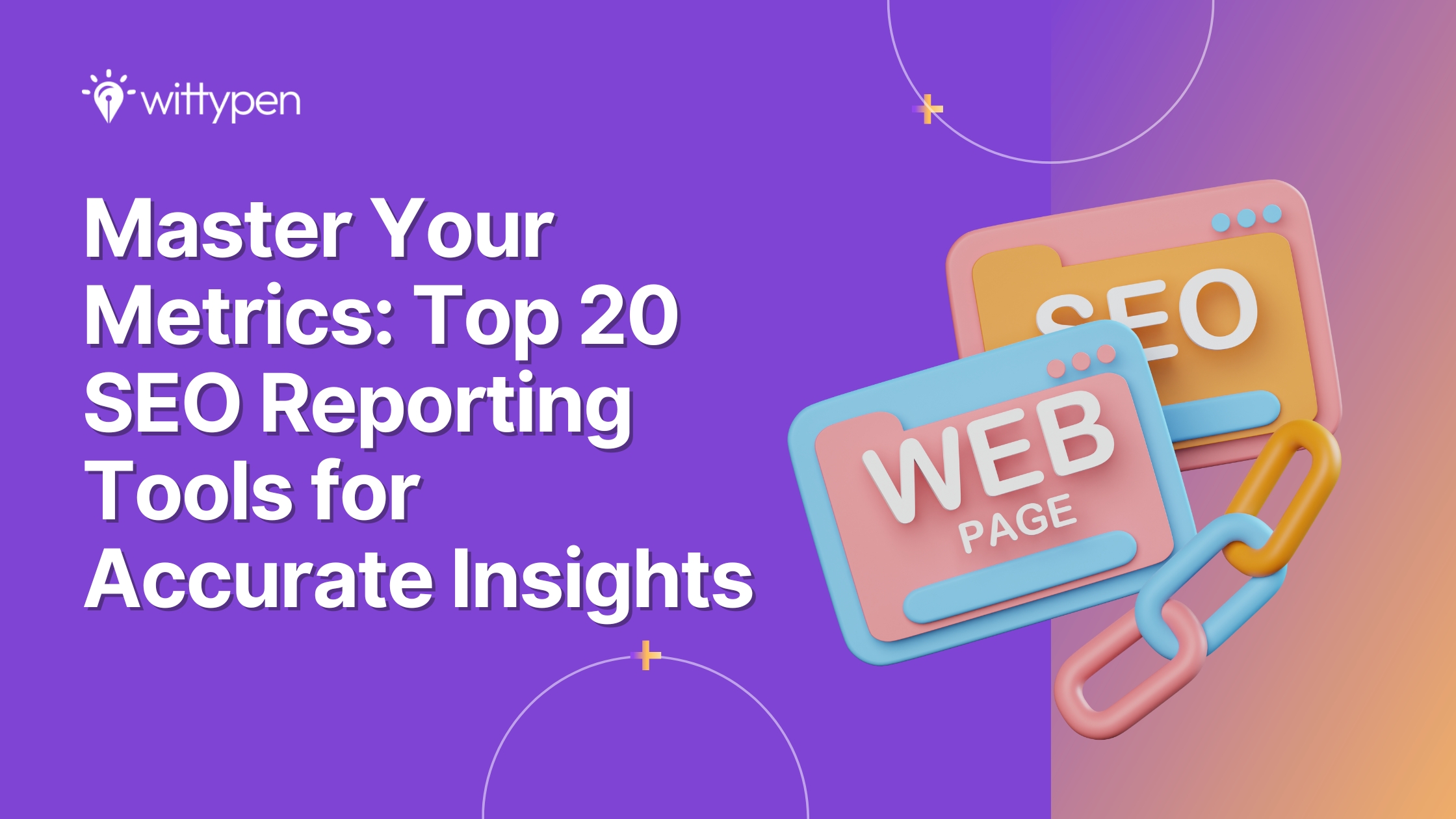Last updated on May 9th, 2024
If you want to boost your search engine rankings, increase organic traffic, and improve user experience, adopting a complete on-page SEO checklist is essential. This guide will help you gain an in-depth understanding of the on-page SEO checklist, enabling you to implement strategies that appeal to both search engines and users.
By implementing these strategies, you will help search engines understand your website, its content, and the value it gives to your visitors and consumers. It will also help you identify whether your website content is relevant to the searcher’s query.
Also, on-page optimization techniques like strategically placed keywords, meta-tags, optimized headers, and flawless mobile responsiveness will give search engines a roadmap of your content. In simple words, use an on-page SEO checklist and rank higher on Google.
On-Page SEO Checklist

What Does On-Page SEO Include?
The main purpose of an on-page SEO checklist is to improve your site’s visibility and ranking. On-page SEO thus includes optimizing your content using on-page SEO techniques.
1. What Is On-Page SEO?
On-page SEO is the fundamental part of everyday SEO. It is the process of optimizing your web pages and their content for the search engines as well as your users. The primary objective of on-page SEO is to rank pages higher on search engines like Google. This leads to more organic traffic and revenue being directed towards your site.
On-page SEO are the on-page factors that can make or break your SEO success. It is a name used to refer to a combination of content and technical SEO that focuses on optimizing individual pages. This is limited to not only content but also extends to titles, links, meta-tags, images, anchor text, images, and more.
To ensure success, you must implement on-page optimization techniques that make all these elements work together so that your content is optimized for search engine algorithms while also being valuable for your audience. The basis for good on-page SEO lies in showing Expertise, Authoritativeness, and Trustworthiness (or EAT).
2. Key On-Page SEO Factors
One of the most important things to remember is that on-page SEO depends on the actual content of the page. This means that everything within the site can affect the SEO. The key on-page SEO factors are:
Content: The content of the article should be unique, fit the search intent, anticipate and answer the user’s next query, and include relevant keywords from the on-page SEO checklist.
Title Tags: The title tag is your content’s name on Google which determines if people will click your content. Thus, make sure it answers their question, includes keywords, and grabs their attention with strategic words or numbers.

Headings: Headings show content structure to readers and search engines. There are six types, from H1 to H6, with H1 being the largest and most important. Ensure that you use keywords in your headings.

URLs: To describe the page clearly, use keywords in URLs. Keep the URLs short and easy to understand by both search engines and visitors.

Internal Linking: It refers to the addition of relevant links within your content, helping search engines and users navigate your site effectively. Aim for 2-3 internal links per article, or create pillar content if needed.

Image Optimization: Enhance the appeal of your content by using images. Original images boost SEO, but if unavailable, use relevant images. The images must have alt texts for accessibility and descriptive texts to give context to search engines.
Once you have mastered all these factors and fulfilled your on-page SEO checklist, you will be able to achieve optimal website visibility and search engine ranking.
Technical Optimization On-Page SEO Checklist
Technical SEO has the power to make or break your rankings. However, the fortunate part here is that technical SEO problems are relatively easy to fix, especially when you follow the given on-page SEO checklist.
1. Focus on Title Tags and Meta Descriptions
The title tag is your webpage’s title, as seen on the search engines. This means that whenever you search for something on Google and click on the article’s name, the page that opens up is the title page. You must make the title tags as relevant as possible because visitors will click on them only if the content is relevant to their search.
Here are the things to take care of in your title tag:
- Add your keyword
- Do not overload it with keywords
- Ensure that you place the main keyword before the other keywords
- Its length should be within 60 characters
- Do not use all-caps
Add numbers or names that appeal to people (for example, 8 amazing B2B marketing ideas that will get you ahead in 2024)
It is not similar to the H1 tag – which is your article’s title on the site. This is because some texts work better if the title tag is different than H1.
Meta descriptions are under 160 characters in length and give a summary of your webpage. Make sure that they accurately represent what the page is about and use the most important keywords, as they play a major determining role in whether the target audience will click on them or not.
Effective meta descriptions are pivotal to optimizing your SEO outcomes. Their objective is to encourage clicks, thereby potentially boosting your page’s ranking on a search engine’s results page.
2.Follow a Proper URL Structure
You must implement a URL structure that is optimized for SEO and usability. An optimized URL structure will increase click-through rates from search engines and internal site navigation.
Key features of a good URL are:
- Short and easy to understand
- Should contain keywords
- Should communicate what the page is about
- Separate words using a hyphen
- Do not mention years that might change
Lets consider following URL: https://wittypen.com/blog/content-writing-tools-for-seo/
When users see this URL, they know what the article is about in just a glance. It also ensures that the search engine spiders know the content of your page before visiting it, making indexing your page easy for them. Additionally, the URL allows you to naturally add your keyword in one more place.
However, if your URL is https://example.com/?information=1.html: users will not know what the page is about. Such a URL also makes it difficult for the spider to view the article’s content.
URLs play a role in your site’s initial ranking and page grouping. Considering the role a proper URL structure plays in your site’s performance, it is an important part of your on-page SEO checklist.
3. Ensure Keyword Optimization
To ensure that your site appears in relevant search results, you must integrate keywords into your page. You must also undertake keyword research to find out what words or phrases people use to find pages like yours.
Considering that Google gives more weight to the first 100-150 words of a page, you must use your keyword once here. For example, in this article, the keyword ‘on-page SEO checklist’ is used in the initial 100 words.
Another way to optimize keywords is to use them in H1, H2, and H3 tags. In this article, the term ‘on-page SEO’ is used in the first subheader itself.
You must ensure that the keyword density of your focus keyword and other related and long-tail keywords is maintained at 1-2% throughout the body of the content. Critical on-page elements where you must include keywords are:
- Titles
- Headers
- Meta Tags
- Body Content
- Images
These need to be incorporated strategically to ensure that the search engines detect it and match it with relevant queries. Keyword optimization strategies that you must follow to ensure success are:
- Avoid keyword overstuffing, as this can lead to poor user experience and penalties from search engines
- Use the keywords sparingly and strategically where they have relevance and contextual appropriateness
- Regular monitoring and analysis of keyword performance is a must for successful keyword optimization
An added advantage of this is that it will make the reading experience of your visitors natural and user-friendly.
4. Make Effective Headings and Subheadings
Headings and subheadings are crucial elements of the on-page SEO checklist because they assist search engines in understanding the structure and main content of the website. They also enhance the experience of your visitors by providing them with a clear hierarchy and enabling them to scan your content.
To ensure that you have effective headings and subheadings, you must implement the following practices:
- The headings should provide clear, concise descriptions of the content that follows.
- Headings should be further optimized using primary and long-tail keywords. Primary keywords are usually used in H1, and other relevant keywords are used in H2 to H6.
- While H1 should be used only once throughout the article, H2 to H6 subheadings can be used as many times as needed.
- Avoid misusing or overusing heading tags, as this will distract the search engines from identifying the main content and thus potentially undermine your SEO efforts.
Content Optimization On-Page SEO Checklist
When it comes to content optimization, unleash the power of on-page SEO techniques by ticking off every box on your on-page SEO checklist. This will guarantee that your content shines and reaches the relevant audience.
1. Carry Out Keyword Research and Targeting
The base of keyword research is to identify search queries relevant to your business and customers. It is a 3-step process of finding, sorting, and prioritizing keywords. Let’s simplify this:
- Identify Your Competitors: To start with keyword research, check out what keywords your competitors are using. This is because if they are getting results from those keywords, you can too.
- Focus on Your Main “Money” Keywords: Also known as “head terms” or “pillar keywords,” these bring in leads, sales, and conversions. They are high-competition, high-volume keywords that give insight into your content. Keywords with transactional or commercial intent tend to have higher conversion rates.
- Focus on Long-Tail Keywords: These are specific search queries with low volume and are thus easier to rank for. Using long-tail keywords often leads to more conversions. Usually, long-tail keywords have main keywords embedded in them.
- Make a Keyword Map: After you have your target keywords, map them to the right pages on your site. Group keywords that answer the same question and focus on each set of keywords to design your site’s structure and potential pages
- Identify Search Intent: Find out what kind of searches are happening for your keywords – are people looking for information, trying to buy something, or just browsing? Make sure your content matches what they are searching for.
Sorting out the right short-tail keywords and long-tail keywords is a small thing to remember that can make all the difference. Identifying the right intent and opportunity considering the search volume is crucial.
Lastly, identify the questions that visitors are asking related to your keywords, assess your ranking potential for a keyword, and prioritize your tasks accordingly. Keyword research and targeting are thus crucial elements of every on-page SEO checklist.
2. Prioritize High-Quality Content Creation
One of the most vital elements of a complete on-page SEO checklist is content. The amount of content you have can significantly impact your website’s visibility on search engines.
This is why when you are crafting your content, you need to make sure to integrate your keywords strategically and pay attention to the following techniques:
- Place keywords early in your content to give them prominence.
- Utilize strong tags for your keywords within the article when appropriate.
- Pay attention to keyword density; naturally, repeating keywords throughout the page can enhance their presence in the content.
- It’s essential to maintain a healthy level of uniqueness and minimize duplication on your website. Google favors unique content, so strive to keep your content as fresh and original as possible.
- Focus on creating content that is valuable and relevant to your audience. Think about what they want to know, what problems they are trying to solve, and how your content can help them.
- Break up your content with headings, bullet points, and images to make it easy for users to digest. This, in addition to your other on-page optimization techniques, will accurately signal the structure and relevance of your content to the search engines.
To ensure high-quality content, you must audit your site’s existing content. Do this by consistently monitoring traffic and engagement levels on your page. This will help you identify areas for enhancement and boost your site’s SEO performance.
Make the necessary updates and revisions to ensure that your content remains current and relevant. This will help maintain the quality and effectiveness of your content over time while also signaling to search engines that your site is active and authoritative.
3. Optimize Images and Media
Optimizing images and media is an unforgettable element of a complete on-page SEO checklist, as it leads to more unique page views, backlinks, and shares. To keep the content engaging, add visual content like how-to videos, infographics, illustrations, photos, and more.
Tips for optimizing images and media are:
- While having original images is gold for your on-page SEO, if you do not have any, sourcing quality images is the next best thing. However, avoid using stock photos, as Google detects them as duplicates and does not boost your SEO.
- The images and media you use should be relevant to your content, positioned well, and sized appropriately.
- Resize and compress your multimedia to ensure that they do not slow down the loading time of your page.
- Make sure your images and media are shareable, as this will help in boosting your EAT.
- When you save the images and media, use a filename that briefly describes what they are about. For example, an infographic on on-page SEO steps should be named – ‘on-page SEO steps’ and not something random like – ‘123456.’
- Images and media should have descriptions. This will add an extra layer of context and engagement for your audience and will help drive your point home.
- Ensure images and other forms of media use Alt text (i.e., alternative text). This is included in a page’s HTML code to describe an image. It assists search engines and increases the accessibility of your page. Optimizing your images and media’s alt text leads to more traffic from search engines like Google and Google Photos.
User Experience On-Page SEO Checklist
Lastly, it is crucial that you do not forget about user experience as one of your on-page optimization techniques. Along with your complete on-page SEO checklist, it is all about keeping your visitors happy and engaged. This will ultimately boost your SEO rankings.
1. Guarantee Website Speed and Mobile Optimization
Ensuring your website is mobile-friendly is crucial, especially since Google prioritizes mobile-friendly sites for rankings. Since mid-2019, Google has adopted mobile-first indexing for all websites.
Best practices to make your site mobile-friendly are:
- Choose a responsive website theme to ensure it adapts well to mobile devices. When building your site, aim for a design that looks great on both – desktops and mobile devices to improve search engine rankings.
- Make navigation and content readability seamless on mobile devices.
- Optimize titles and meta descriptions specifically for mobile search engine results pages (SERPs).
Additionally, it is vital to check your site’s loading speed. A fast-loading site is crucial for better rankings, as search engines may penalize slow-loading pages.
Furthermore, securing your site with HTTPS is essential, as it is a confirmed ranking signal for Google. Ensuring your site is HTTPS-protected not only boosts security but also enhances your site’s credibility and trustworthiness.
Lastly, address any crawl errors promptly. If Google encounters crawl errors, it may struggle to index your pages, resulting in lower rankings. Keeping your site error-free ensures smooth indexing and better visibility on search engine results pages.
2. Facilitate User-Friendly Navigation
User-friendly navigation is an essential component of your on-page SEO checklist. When visitors land on your site, you want to make it super easy for them to find what they are looking for.
This is because if your site is a maze, users will quickly get frustrated and bounce right off. In contrast, if it is a well-organized, easy-to-navigate space, they will stick around longer and explore more.
Some tips for ensuring user-friendly navigation of your pages are:
- Logically organize your menus and submenus with the help of H1s, H2s, H3s, and so on.
- Use descriptive labels for your images and media that make sense to your audience. The labels should not be vague or confusing but accurately reflect the content they lead to.
- Incorporate internal links throughout your content to seamlessly guide users to related pages.
- Do not overwhelm your visitors with too many menu options. Keep your navigation menu clean and streamlined.
- Incorporate breadcrumbs as they provide users with a clear path back to where they came from, enhancing navigation and user experience.
- Ensure your navigation is just as easy to use on mobile devices as it is on desktops. Responsive design is key here.
- You can also add a search bar to your page, making it easy for users to find what they are looking for and enhancing on-page SEO effectiveness.
How Does an Ideal On-Page SEO Checklist Look Like?
To optimize your website’s performance, ensure effective indexing by search engines, and boost search rankings, implement this ideal on-page SEO checklist:
- The title tag and meta description must summarize the page’s content.
- Ensure the URL contains keywords and is short and easy.
- Naturally integrate keywords while maintaining a 1-2% keyword density.
- Add keywords in titles, meta tags, headers, images, and body content.
- Use effective headings and subheadings to structure the content.
- Create valuable, relevant, and engaging content for visitors.
- Add engaging visual content.
- Optimize the images and media by adding descriptions and compressing files to prevent slow loading.
- Have a fast-loading, mobile-friendly site that is HTTPS-protected.
- Improve user navigation by organizing menus and sub-menus logically using heading tags H1 to H6.
- Incorporate internal links to guide users to related pages.
The perfect assistant to the above on-page SEO checklist is Wittypen’s free on-page SEO checker. It is designed to give customized insights and expert tips aligned with the industry’s best practices for optimizing your website’s on-page SEO.
To use Wittypen’s on-page SEO checker, you need only input your published URL and the target keyword. In just one click, it will give you insights into your page’s overall performance, highlight successful strategies, identify critical issues that need to be fixed, and suggest potential improvements to enhance your site.
The perfect assistant to the above on-page SEO checklist is Wittypen’s free on-page SEO checker. It is designed to give customized insights and expert tips aligned with the industry’s best practices for optimizing your website’s on-page SEO.
To use Wittypen’s on-page SEO checker, you need only input your published URL and the target keyword. In just one click, it will give you insights into your page’s overall performance, highlight successful strategies, identify critical issues that need to be fixed, and suggest potential improvements to enhance your site.
Conclusion: Scaling Your Page with On-Page Optimization Techniques
When you tackle your on-page SEO checklist and nail those techniques, you are not only making your content look good for search engines but also super user-friendly and engaging. From crafting compelling meta descriptions to incorporating mobile-friendly design elements, every aspect contributes to the overall performance and effectiveness of your online presence.
Thus, with the help of your complete on-page SEO checklist, you have everything you need to succeed in the online world. However, on-page SEO steps are not just about ticking off boxes. It is about connecting with your audience, staying up-to-date with the latest trends, and constantly improving your website’s performance.
So, as you continue on this journey, remember to keep experimenting, keep learning, and keep pushing yourself to new heights. With the right mindset, the right technique, and the right tools, there is no limit to what you can achieve with your page.
Optimize your website effortlessly with Wittypen’s free On-Page SEO Checker. Generate a free SEO report on your blog and get actionable insights to improve your rankings. To get started, just add your blog URL and keyword.









